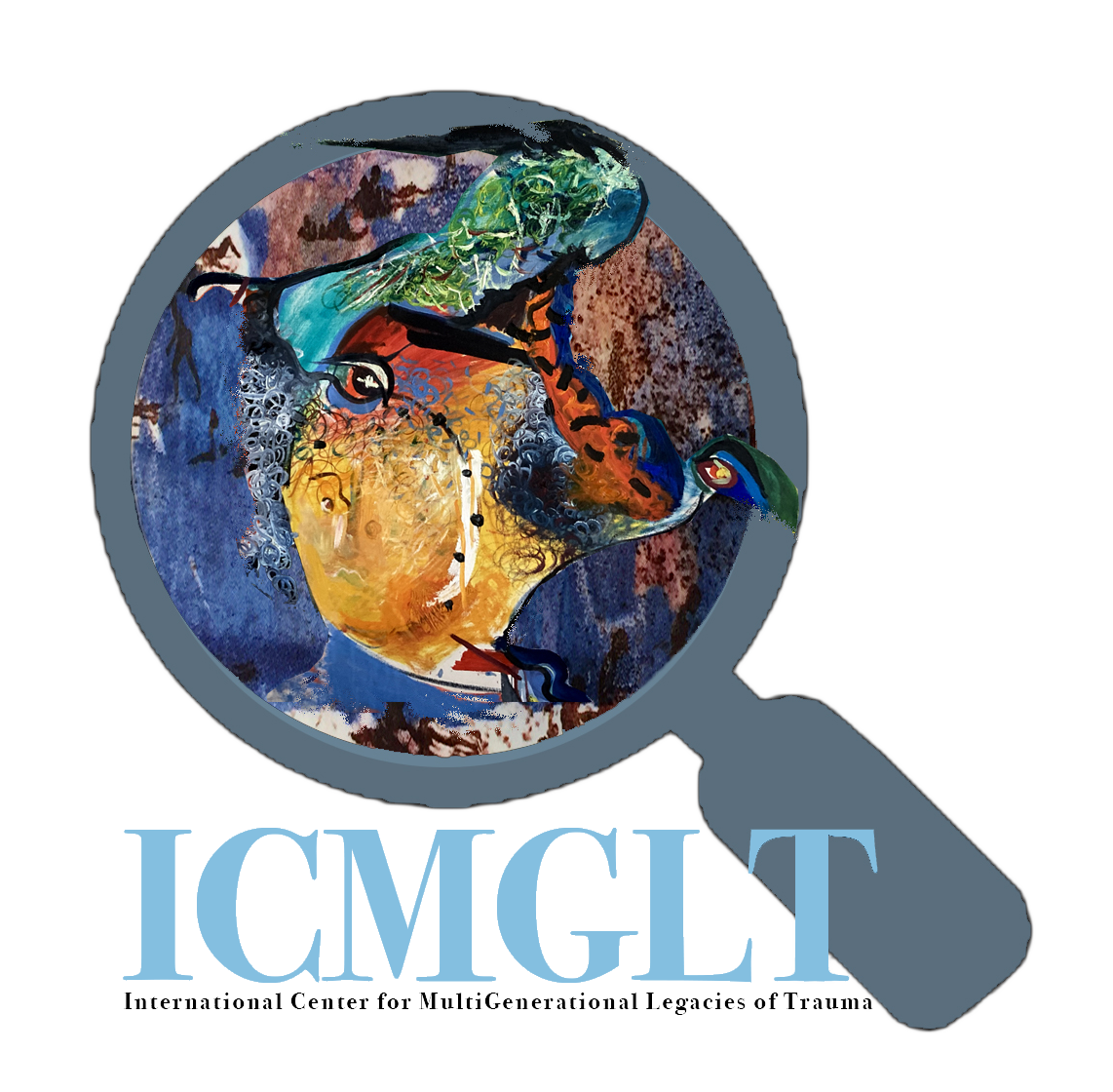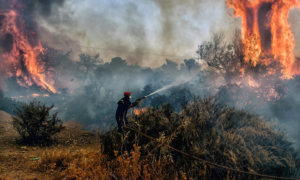Yutao ChenApril 10, 2025

Ruins of the 18th-century Portuguese village that surrounded the Príncipe da Beira Royal Fortress.
McCoy, our Rio de Janeiro bureau chief, and Vilela, a photojournalist, drove to the Brazil-Bolivia border, then trekked through dense forest to reach the ruins. Ledur, a graphics reporter, mapped the discoveries and animated a lidar video to illustrate the process.
New! Catch up quickly with key takeaways
COSTA MARQUES, Brazil — As the storm approached, the men hacked deeper into the forest, searching for clues that might unravel a century-old mystery.
“We need to go 50 meters ahead,” archaeologist Carlos Zimpel Neto said one morning in late January, looking down at his tablet, ignoring the booms of thunder. “Then a little to the left, then a little to the right.”
He put down the tablet and, mosquitos in pursuit, plunged deeper into the grip of a remote jungle that had once yielded one of the Amazon’s most remarkable archaeological discoveries: a vast Portuguese military fortress rising above the Guaporé River. The 1913 sighting of the fortress, which had been abandoned by Portugal and lost to the forest, begged a question that historians and archaeologists have struggled to answer ever since.
Where was the rest?
Story continues below advertisement
Contemporaneous maps and historical records showed that the 18th-century Portuguese colony, which at its height sheltered at least 1,000 people, had extended far beyond the fortress. There was supposed to have been a city named Lamego. Military villas and churches. But the thick vegetation here along Brazil’s border with Bolivia had concealed it all — until now.

The 18th-century Príncipe da Beira Royal Fortress was discovered in 1913. The Portuguese colony that surrounded it is now being exhumed.



Using a laser technology known as lidar, Zimpel and his team have rediscovered the lost Portuguese colony — finding an intricate urban system of canals, roads and military fortifications, and the remains of stone structures.
The breakthrough, announced in October, was the latest example of how lidar is ushering in a new era of discovery in the Amazon. The laser sensor, which can be mounted on an airplane or drone, have given scientists the equivalent of X-ray vision, enabling them to puncture the forest’s dense canopy like never before, and reveal the secrets of the world’s largest rainforest.
The discoveries extend beyond Brazil. Scientists have used lidar in Bolivia to reveal traces of “urbanism that has not previously been described in Amazonia,” a 2022 Nature article reported, including evidence of 70-foot-tall pyramids and an elaborate water-management system. In Ecuador, lidar helped locate “clusters of monumental platforms, plazas and streets” that rivaled Mayan settlements in Mexico and Guatemala, according to a study published last year in Science.
The revelations have upended long-standing theories about the history of the Amazon, where scientists had long contended that the soil wasn’t rich enough to support the kind of complex, agrarian societies found elsewhere in Latin America. As it turns out, evidence of such development was there all along — scientists simply lacked the tools to see it.
Story continues below advertisement
“This is the moment of our greatest advance and understanding of the forest,” said Luiz Eduardo Oliveira e Cruz de Aragão, a remote sensing researcher at Brazil’s National Institute for Space Research.
Zimpel, following a digital map built from lidar imagery, now broke out of the forest. Through the rain, he looked across a clearing where the city of Lamego once extended. Most of its structures, made from clay and palm fronds, had long since disintegrated.
But over here was the broken foundation of a Portuguese church, with shards of roofing scattered about; over there were bits of broken ceramic, made 1,200 to 2,000 years ago. They’d been forged by members of an advanced Indigenous society, Zimpel said. He believes they were also responsible for large circular geoglyphs in the area — apparent only now through lidar analysis — that long predated the Portuguese.
The technology, Zimpel said, hadn’t just exposed the lost colony. It was also helping to rewrite the human history of the forest.

Pulling the tops off the trees
An Amazon Revealed researcher moves through the forest at night in search of archaeological remains indicated by lidar.
The inscrutability of the Amazon has tormented explorers for centuries, driving many to the brink of madness, or to death.
Theodore Roosevelt, who traversed the forest’s depths in the early 1900s, called it a “land of unknown possibilities.” To British adventurer Percy Fawcett, who disappeared in Brazil while hunting for a lost city, the forest was the “last great blank space in the world.”
Lidar — short for “light detection and ranging” — is increasingly filling in the blank.
Invented in the 1960s and first applied in the development of aerospace technologies, lidar measures the distance to an object by emitting a laser, then timing how long it takes to receive the reflection. When attached to a plane — or, more frequently nowadays, a drone — it can collect millions of data points to render an extraordinarily precise topographical image of the landscape below, achieving in weeks what would once have taken a lifetime.
Here’s how it works.
“Like we’re lifting up a rug,” said Eduardo Neves, who directs the Museum of Archaeology and Ethnology at the University of São Paulo. “We give it a little pull, and take a peek at what’s below.”
Over the past 15 years, as advances in technology have lowered costs, lidar has effectively remade modern archaeology, leading to the discovery of lost cities from Central America to Southeast Asia.
And in this remote part of Brazil, where the Portuguese once tried to bring both the Amazon and the Spanish to heel, Zimpel found more than he could ever have imagined.
Story continues below advertisement

Exploring the ‘labyrinth’
Ruins of the colonial village near the Príncipe da Beira Royal Fortress.
Zimpel’s journey began in the summer of 2016, when he set out on a long drive, interested in visiting the Príncipe da Beira Royal Fortress as a tourist. He traveled across the heavily deforested state of Rondônia until reaching a preserved patch of jungle at the end of the road. There, rising out of impenetrable greenery, was the decaying castle.
Nearby was a village called a quilombo, populated by the descendants of enslaved Africans. One of its inhabitants was Elvis Pessoa, president of the community association and a local tour guide, who told Zimpel the story of his people.
In the 1700s, as tensions mounted between the Portuguese and Spanish over who would control the region, Portugal built its largest colonial fortress. To complete the job, he said, thousands of enslaved Africans were shipped by riverboat from the distant coast.


“There is a lot of urgency right now. The forest here burned last year. It had never happened like that before.”Carlos Zimpel Neto, 42, archaeologist responsible for the Amazon Revealed project at Príncipe da Beira and professor at the Federal University of Rondônia
“We need to preserve these ruins to show that this is our history here.”Santiago Pessoa, 32, who has led the quilombo’s archaeology efforts since the 2023 death of his brother, Elvis
When the colonial powers finally settled their territorial dispute, the military outpost lost its strategic importance. The Portuguese, undoubtedly spending a fortune to maintain the colony, abandoned both the fortress and the slaves who’d built it.
As the pair chatted, Zimpel mentioned that he was a professor of archaeology at the Federal University of Rondônia. This caught the attention of Pessoa, who said there were other structures hidden in the forest, grouped around a peculiar site that locals called “the labyrinth.” Did the professor want to have a look?
Zimpel was dubious at first. But out in the forest he came upon sights unlike any he’d witnessed in his career: Line after line of 15-foot-tall stone walls. A solitary doorway arch. The stone foundation of a rectangular structure.

Zimpel, tablet in hand, supervises as his colleagues from the quilombo search for ceramic remains near the fortress.



Zimpel began excavating, first with Pessoa, then Pessoa’s brother, Santiago, after the community leader’s death in April 2023. Meanwhile, he scrutinized maps sketched by the Portuguese and Spanish in the mid-1700s. He started to suspect that what he’d seen was the lost Portuguese colony. But he couldn’t be sure. Not without lidar.
In 2022, his archaeology colleague, Neves, received a substantial grant from the National Geographic Society to use the technology to study the forest. Neves, coordinator of an academic consortium called Amazon Revealed, wanted to explore at least 50 sites. Zimpel had one place in mind already.
The next year, after 10 days of flyovers, he had his answer. The lidar images almost perfectly matched the maps from the 1700s.
“We had found it,” Zimpel said.

Endangered history
Cattle graze in a deforested area a few meters from the Príncipe da Beira archaeological site.
As soon as the ruins had been uncovered, though, they appeared on the verge of being lost again.
The Portuguese settlement, like many remnants of Amazonian antiquity, is in what’s known as the arc of deforestation, a band that loops along the south of the rainforest and contains much of its destruction. Last summer, as a historic number of fires burned through the Amazon, blazing with particular ferocity in the arc, the forest that buffered the ruins went up in flames.
The quilombo villagers, surrounded by cattle ranches and soy plantations, believed the fires were lit with criminal intent to clear land.
“We’d never thought the fire would get so close,” said Nucicleide da Paz Pinheiro, who became the president of the local association after Elvis Pessoa’s death. “It burned through 80 percent of our forest.”


“This work is important so my son isn’t forgotten, who he was, and what he did.”Arminda Cayaduro Pessoa, 62, one of the matriarchs of the quilombo and mother of the late Elvis Pessoa
“They say it was the Portuguese who built this. But our people were the ones to build it, and many died doing it.”Nucicleide da Paz Pinheiro, 37, who became president of the community association after Elvis Pessoa’s death
Months later, in January, Zimpel went to meet with the quilombo villagers. He spoke with Pessoa’s mother, then trekked back into the jungle with a sense of urgency. He wanted to see what remained of the ruins. But he also wanted to see what more he could find. With every additional discovery, he could petition the authorities to legally preserve more of the forest as an archaeological site.
The damage was immense — blackened foliage, stunted regrowth, trees thinned out — but not as bad as Zimpel had feared.
Story continues below advertisement
He looked down at his tablet and analyzed the lidar-created map, which showed signs of historical human activity straight ahead. He found a shallow ravine that ran in a perfect straight line. Then another a short distance away. Beside one was a large stone edifice. It was covered in mud and overgrowth, but apparently untouched by fire.
Zimpel took a step back to admire it.
“This is one of the biggest structures we’ve seen,” he said. “There are so many more houses out here than we thought.”
As the mosquitos swarmed, Zimpel consulted his map once more and disappeared back into the forest.
About this story
Lidar videos by Vinicius Peripato from Brazil’s National Institute for Space Research. Satellite image is from Maxar and CNES/Airbus via Google Earth. Photos by Rafael Vilela for The Washington Post. Design and development by Yutao Chen. Maps and animation by Júlia Ledur. Story editing by Jesse Mesner-Hage and Reem Akkad. Photo editing by Jennifer Samuel. Design editing by Joe Moore. Graphics editing by Adrián Blanco Ramos. Copy editing by Martha Murdock.




